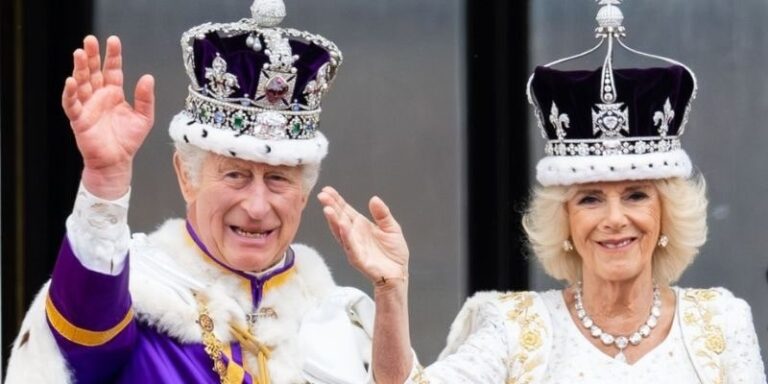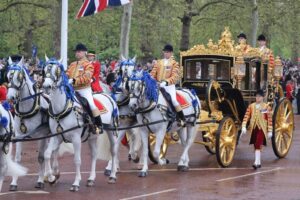The Non-Traditional Coronation of King Charles III
The new king made some changes to the millennium-old celebration.
By: Kirsten Brooker | May 17, 2023 | 602 Words

King Charles III and Queen Camilla (Photo by Samir Hussein/WireImage)
For the first time in almost 70 years, a coronation occurred at Westminster Abbey in London on May 6, 2023. King Charles III was anointed with holy oil and officially crowned the King of England at this event. Along with family, friends, and colleagues, King Charles III accepted his new position in the monarchy with elegance and style, as has been done for over 1,000 years. Different from the others, however, the king added some modern touches to the 2023 festivities.
Historical Coronation Ceremonies
Over 1000 years ago, coronations became a tradition to increase church involvement in the state. During the ceremony, the crowned king or queen was anointed with holy oil to confirm God’s grace upon the new ruler.
Historically, the ceremony consists of several stages:
- Procession from Buckingham Palace to Westminster Abbey.
- A second Procession upon entrance to Westminster Abbey.
- The Recognition – The new monarch stands beside the coronation chair and is presented to the day’s attendees.
- The Coronation Oath – This is the only part of the ceremony required by law. At this point in the celebration, the king vows to govern the people of the United Kingdom and the Commonwealth Realms according to their various laws and customs.
- The Anointing – The monarch is anointed with holy oil by the church’s spiritual leader, the archbishop of Canterbury. This is done in private, as it is the most sacred moment of the entire ceremony.
- Regalia – The king is given objects representing the monarch’s powers and responsibilities. These items include the Sovereign’s Sceptre with Cross, the Sovereign’s Orb, and the Coronation Spoon. The crown is also placed upon his head in this part of the ritual.
- The Homage of Peers – This is when senior members of each order kneel before the new king and publicly show homage – or respect – for their leader.
The 2023 Ceremony – The Crowing of King Charles III and Queen Camilla

(Photo by Neil Mockford/Getty Images)
While much of the ceremony was conducted in a conventional fashion, King Charles III put his own twist on his day and broke a millennium of tradition. From what he wore under the historical garments to the length of the event, there were several differences between Queen Elizabeth’s and King Charles’ coronations.
A guest list for an occasion like this is typically quite high. For example, around 8,000 people attended Queen Elizabeth II’s coronation in 1953. King Charles III narrowed the list of attendees down to about 2,200 people. The observance is historically around three hours long, but the new king’s special day was completed in just two hours.
Generally, the man of the hour would wear a specially made garment under his or her traditional ceremonial clothing. King Charles III, however, wore his military uniform beneath his attire. Also, rather than riding to the Abbey in the Gold State Coach that was made for King George III in 1762 – and has traditionally been the way of transporting monarchs to and from the coronation ever since – King Charles and Queen Camilla, who was also crowned in a shorter and simpler ceremony, opted to ride to the event in the Diamond Jubilee State Coach instead.
King Charles III chose to skip the Homage of Peers portion of his coronation. Instead, he asked just his son and heir to the throne, William, Prince of Wales, to pledge his loyalty to the crown. As embedded into culture a one-thousand-year-old tradition may be, there is always room for change. And King Charles proved that when he altered the historical king and queen coronation proceedings.
















